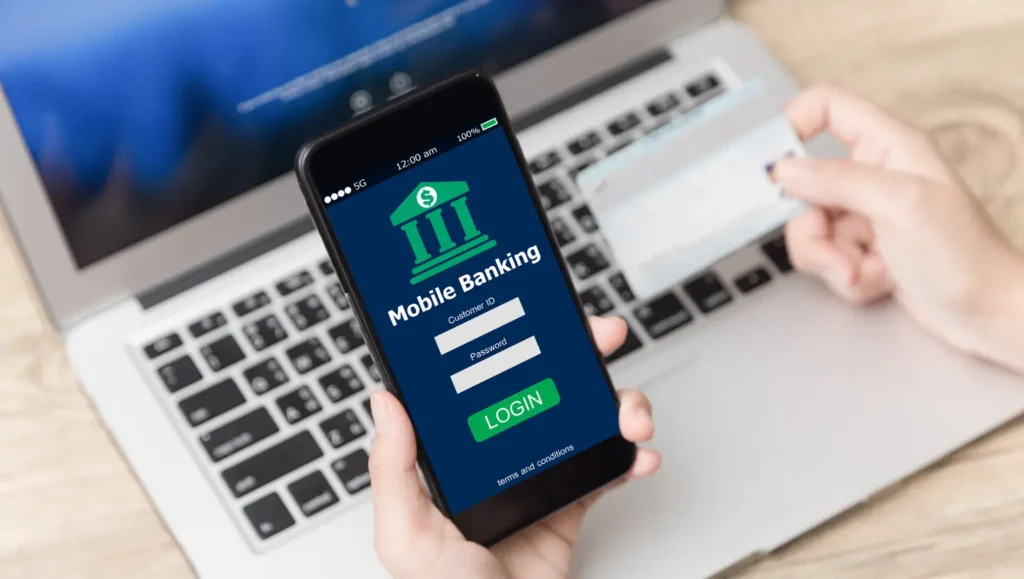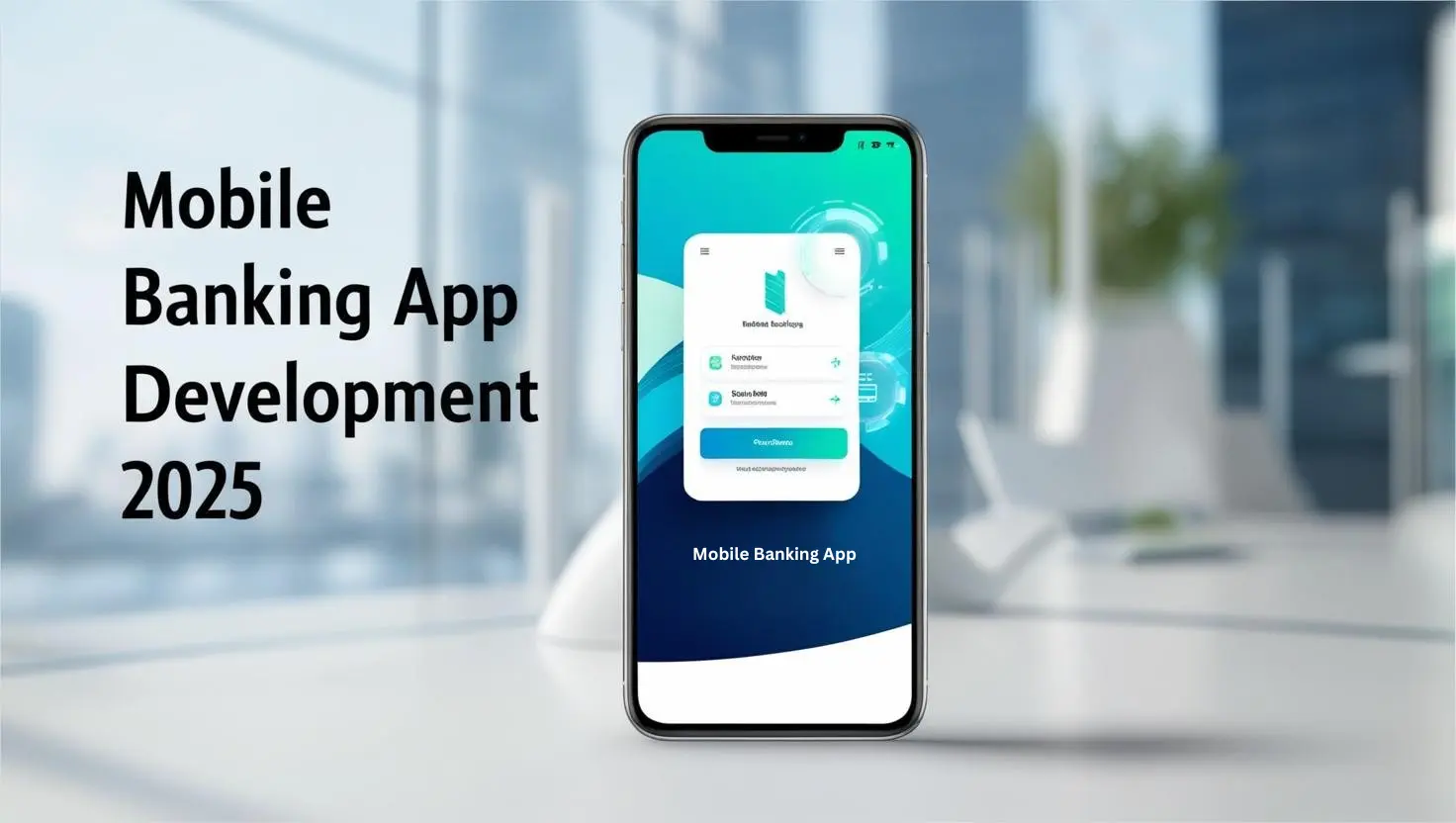Mobile banking app development is the process of creating secure, user-friendly applications that allow customers to manage their finances anytime, anywhere. This guide explores essential features, development steps, costs, challenges, and successful examples, helping businesses navigate this critical digital transformation.
Importance and Market Trends
With over 89% of U.S. bank account holders using mobile banking as of 2022 (Insider Intelligence: Mobile Banking Usage), and global digital payments projected to reach $36.75 trillion by 2029 (Statista: Digital Payments Market), the demand for mobile banking apps is at an all-time high. This shift underscores the need for banks and fintechs to prioritize mobile solutions for customer convenience and competitive edge.
Development Process Overview
The process involves ideation, market research, UX/UI design, tech stack selection, development, testing, and continuous updates. Each stage ensures the app is secure, compliant, and user-friendly, addressing both customer needs and regulatory requirements.
Survey Note: Comprehensive Analysis of Mobile Banking App Development
Mobile banking app development has become a cornerstone for financial institutions aiming to enhance customer engagement and stay competitive in an increasingly digital landscape. This analysis, conducted on April 10, 2025, delves into the multifaceted aspects of developing such applications, drawing from extensive research to provide a detailed guide for businesses. The following sections cover key features, development steps, emerging technologies, cost considerations, challenges, monetization strategies, and real-world examples, ensuring a thorough understanding for stakeholders in banking and fintech sectors.
Market Context and Importance
The adoption of mobile banking has surged, driven by consumer demand for convenience and accessibility. Research indicates that 89% of U.S. bank account holders used mobile banking in 2022, highlighting its critical role (Insider Intelligence: Mobile Banking Usage). Globally, the digital payments market, which includes mobile banking transactions, is projected to grow to $36.75 trillion by 2029, reflecting a 15.90% CAGR from 2025 to 2029 (Statista: Digital Payments Market). This growth is fueled by the widespread use of smartphones and advancements in digital financial services, with 45% of consumers performing finance-related tasks on mobile apps daily (MX: Mobile Banking Stats).
The importance of mobile banking extends beyond convenience, offering cost efficiency by reducing reliance on physical branches and automating processes. It enhances customer retention through personalized experiences, such as AI-driven insights and real-time alerts, and opens new revenue streams through premium features and in-app investments. Banks that fail to digitize risk losing customers to agile fintech competitors, making mobile banking app development a strategic imperative.
Key Features of Successful Mobile Banking Apps
A successful mobile banking app must balance security, usability, and functionality to deliver a seamless user experience. The following table outlines the essential and advanced features, categorized by their purpose:
| Category | Features | Purpose |
| Security Measures | Biometric authentication, end-to-end encryption, multi-factor authentication, AI-powered fraud detection, secure session management | Protect user data and prevent fraud |
| User Interface | Frictionless onboarding, intuitive dashboard, customization, accessibility options | Enhance user experience and engagement |
| Essential Banking | Account management, fund transfers, bill payments, real-time alerts, mobile check deposits, AI finance tools | Enable core financial operations |
| Advanced Integrations | Voice/chatbot banking, blockchain transactions, open banking APIs, cardless ATM withdrawals | Offer innovative and convenient services |
Security is paramount, with features like biometric authentication (e.g., fingerprint, facial recognition) and end-to-end encryption (AES-256, SSL) ensuring data protection. AI-powered fraud detection identifies suspicious activities, while user-friendly interfaces, such as intuitive dashboards and accessibility options, cater to diverse user needs. Advanced integrations, such as blockchain for secure P2P payments and AI chatbots for 24/7 support, enhance functionality and customer satisfaction.

Development Process: Step-by-Step Guide
Developing a mobile banking app is a multi-stage process requiring strategic planning and execution. The steps include:
- Ideation and Market Research: This initial phase involves understanding the target audience, analyzing competitors, and ensuring compliance with financial regulations like GDPR and KYC/AML. For instance, traditional banks may focus on extending digital services, while fintech startups aim for innovative features to differentiate.
- Designing for UX/UI: User experience is critical, with wireframes and prototypes outlining the app’s structure. Accessibility features, such as adjustable fonts and voice navigation, ensure inclusivity, while user testing via A/B testing and focus groups refines the design for seamless navigation.
- Selecting the Right Tech Stack: The choice of technology impacts security and scalability. Native development using Swift for iOS and Kotlin for Android offers high performance, while cross-platform options like React Native reduce costs. Backend solutions like Node.js and secure databases like PostgreSQL are essential for handling transactions efficiently.
- Development and Testing: Following Agile methodologies, development occurs in sprints, allowing for iterative improvements. Security testing, including penetration testing and compliance checks, ensures adherence to standards like PCI DSS, while beta testing with real users identifies usability issues before launch.
- Deployment and Continuous Updates: Post-launch, the app is deployed to Google Play and Apple App Store, with ongoing monitoring using tools like Google Firebase. Regular updates address security patches, user feedback, and performance optimizations, ensuring long-term success.
Emerging Technologies Shaping the Future
Emerging technologies are transforming mobile banking, enhancing security, personalization, and efficiency. AI and machine learning are pivotal, with AI-powered chatbots like Bank of America’s Erica providing 24/7 support and analyzing transaction history for financial insights. Smart budgeting tools track expenses and suggest savings, while AI-driven fraud detection minimizes risks, as seen in PayPal and Mastercard’s implementations.
Blockchain technology ensures secure, tamper-proof transactions, with platforms like JP Morgan’s Quorum reducing fraud and enabling low-cost P2P payments. It also enhances identity verification, addressing rising cyber threats through immutable KYC/AML solutions, as demonstrated by IBM Blockchain.
Cost and Timeline Considerations
The cost and timeline for mobile banking app development vary based on several factors, as shown in the following table:
| Factor | Details | Impact on Cost/Timeline |
| App Complexity | Basic (MVP), mid-level (AI chatbots), enterprise-grade (blockchain) | Increases with complexity, longer for advanced features |
| Regulatory Compliance | GDPR, PCI DSS, KYC/AML requirements necessitate audits and security measures | Adds to cost and time for compliance |
| Technology Stack | Native vs. cross-platform, integration of AI/blockchain | Higher costs for advanced integrations |
| Development Team | In-house vs. outsourcing, location (e.g., Eastern Europe vs. U.S.) | Outsourcing can reduce costs, timelines vary by expertise |
Basic apps may cost less and take shorter time, while enterprise-grade apps, with features like AI fraud detection and blockchain, require higher investment and longer development periods. Compliance with regulations like GDPR adds to costs through regular audits, and the choice between native and cross-platform development affects both cost and time-to-market.
Challenges and Mitigation Strategies
Developing mobile banking apps faces significant challenges, particularly in regulatory compliance and cybersecurity. Compliance with laws like GDPR and PCI DSS is non-negotiable, requiring partnerships with legal experts and regular audits to avoid fines. Cybersecurity threats, such as phishing and MITM attacks, necessitate multi-layer authentication, penetration testing, and user education to prevent data breaches.
To overcome these, banks can implement end-to-end encryption, use AI-driven compliance tools, and conduct proactive security audits. Educating users on security best practices, such as avoiding phishing, further strengthens trust and reduces fraud risks.
Monetization Strategies
Monetizing mobile banking apps is essential to recover development costs and generate revenue. Strategies include:
- Subscription Models: Offering premium features like AI-driven insights and high-yield savings for a monthly fee, as seen with Revolut and N26, with tiered pricing to cater to different user needs.
- In-App Purchases: Selling additional services like stock trading and credit score monitoring, providing value-driven add-ons for users, as implemented by Robinhood and Acorns.
- Advertisements & Partnerships: Earning commissions through affiliate marketing and offering cashback via retailer collaborations, enhancing user engagement while generating revenue, as practiced by Monzo and Mint.
These strategies balance user experience with profitability, ensuring sustainable growth for financial institutions.
Case Studies: Successful Mobile Banking Apps
Innovative digital banks exemplify successful mobile banking app development. Chime offers fee-free banking with automated savings and early direct deposits, appealing to millennials and underbanked users. Revolut provides a global financial super app with multi-currency accounts and crypto trading, generating revenue through subscriptions and interchange fees. N26 leverages AI for financial insights and secure virtual cards, focusing on digital-first solutions for tech-savvy consumers.
These examples highlight customer-centric models, AI automation, and beyond-basic banking features, such as crypto and stock trading, driving engagement and revenue through subscription-based growth and robust security measures.
Conclusion and Future Outlook
Mobile banking app development is a complex but rewarding process, essential for banks and fintechs to digitize services and enhance customer engagement. By prioritizing security, user experience, and innovative technologies like AI and blockchain, businesses can build scalable, future-proof solutions. Partnering with experienced developers ensures compliance, security, and success, positioning financial institutions to meet evolving consumer expectations in 2025 and beyond.

